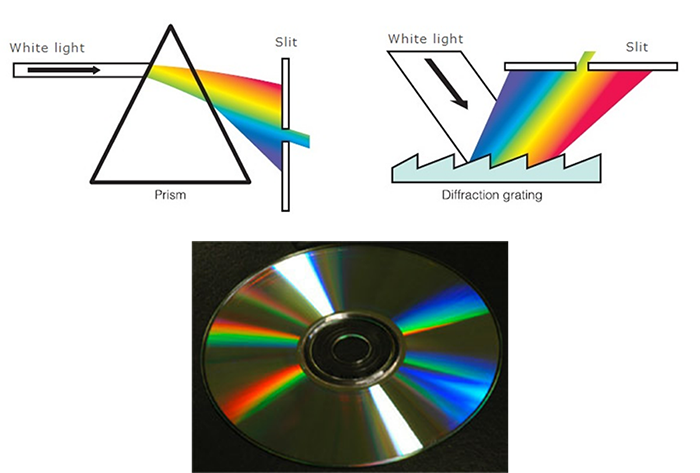What is the function of the monochromator?

The earliest type of light dispersion (separating) device known was the raindrop. Light changes speed as it moves from one medium to another (for example, from air into the water of a raindrop). Rain disperses the white light from the sun in its component colors (wavelengths) as a rainbow. Next best is the prism. This speed change causes the light to be refracted and to enter the new medium (air to glass) at a different angle (Huygens principle). The degree of bending of the light’s path depends on the angle that the incident beam of light makes with the surface, and on the ratio between the refractive indexes of the two media types (Snell’s law). The refractive index of many materials (such as glass) varies with the wavelength or color of the light used, a phenomenon known as dispersion. This causes light of different colors to be refracted differently and to leave the prism at different angles, creating an effect similar to a rainbow. This can be used to separate a beam of white light into its constituent spectrum of colors (top).
You are probably familiar with the way that a prism splits light into its component colors. A diffraction grating does the same job, but more efficiently. Diffraction manifests itself in the apparent bending of light waves around small obstacles or the spreading out of waves past small openings. In optics, a diffraction grating is a reflecting optical component with a periodic structure of a tiny regular series of ruled lines, which splits and diffracts light into several beams traveling in different directions (above).
The angles of the incident and diffracted beams depend on the spacing of the grating and the wavelength of the light so that the grating acts as the dispersive element. Because of this, gratings are commonly used in monochromators of spectrometers. When there is a need to separate light of different wavelengths with high resolution, then a diffraction grating is most often the tool of choice. This “super prism” aspect of the diffraction grating leads to applications in measuring light spectra in both laboratory instruments and telescopes.
You see an example of a diffraction grating almost every day. The tracks of a compact disk act as a diffraction grating, producing a separation of the colors of white light. The nominal track separation on a CD is 1.6 micrometers, corresponding to about 625 tracks per millimeter. This is in the range of ordinary light diffraction gratings. For red light of wavelength 600 nm, this would give a first order diffraction angle of about 22° (bottom).
Most of the shiny iridescent colors seen in insects (butterfly wings) is the result of diffraction rather than from chemical dyes or pigments. Insect diffraction is the result of tiny scales on the body or wings that function like a diffraction grating. An integral part of the monochromator is the exit slit, which only allows light of a very narrow range of wave- lengths through into the rest of the spectrometer. By gradually rotating the diffraction grating, you can allow light from a portion of the spectrum (a tiny part of the wavelength range at a time) through into the rest of the instrument.
The monochromator comprises a dispersive element consisting of an entrance slit and mirrors to create a parallel beam similar to sunlight, and an exit slit and mirrors to extract the monochromatic light.


